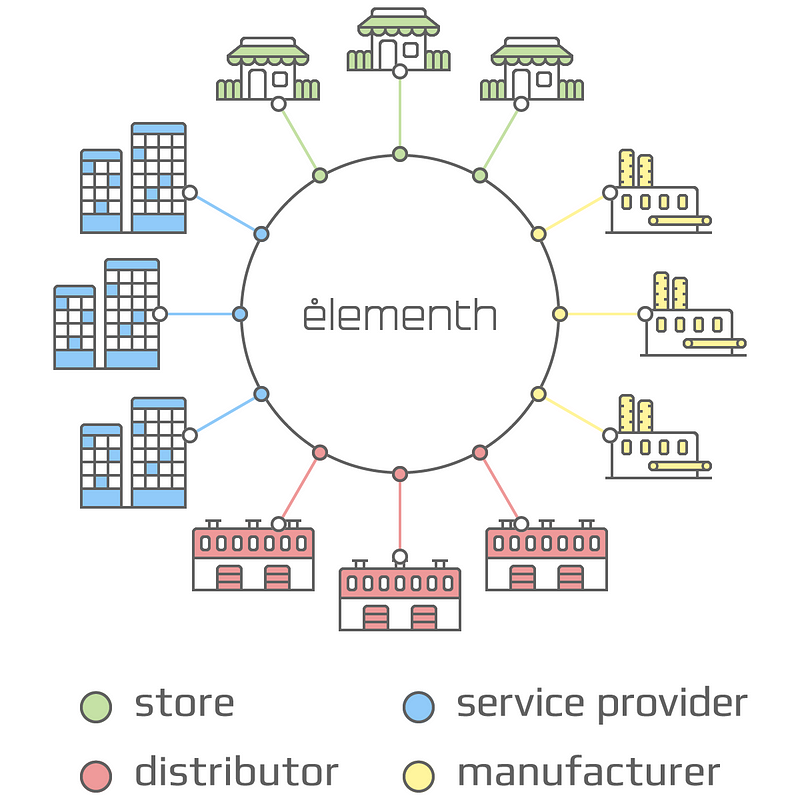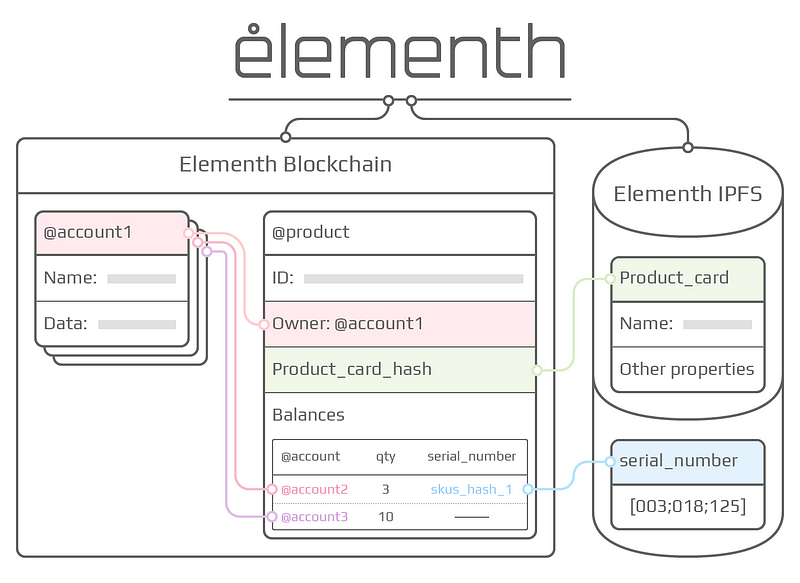Elementh The idea to take blockchain technology that aims to solve the modern world of e-commerce

Elements-nothing in the area of blockchain, aimed at solving the modern world of e-commerce. Elementh is a blockchain for e-commerce, which is a list of items that can be used for various applications and centralized for e-commerce.
Ideas for taking blockchain technology and applied to other concepts as well as long history. In 2005, Nick Szabo proposed the concept in contrast to authorization of owner [7], which explains how "creating new databases in replicated technology" would create a system used to manage one computer that has multiple spaces, creating complex structures. concepts such as manor, unprofitable ownership and land tax. Unfortunately, at the time there was no effective replicated database system, no protocol was implemented. However, after 2009, as soon as the decentralized consensus of Bitcoin evolved, several alternative applications soon emerged.
The lack of smart Bitcoin contracts, first of all, the absence of the Turing-complete programming language, led to the credit of the Ethereum blockchain, a special blockchain that made it possible to write Turing's complete smart contract. Ethereum plans to move into the future, but is currently still working on the PoW protocol, which affects the speed and cost in the system. The alternative is the EOS blockchain, which is currently being developed. It provides the ability to write intelligent contracts, work on the dPoS protocol and helps to create a variety of decentralized applications based on its own blockchain.

The Basic Objective is to create alternative protocols for developing decentralized applications used by e-commerce, providing quality standards, issuing specific products, and facilitating to create smart contracts specific to e-commerce. Elementh will achieve this by creating a blockchain with the Turing-complete built-in programming language, enabling anyone to write smart contracts and decentralized apps, enabling the use of integrated product cards, e-commerce transactions and ownership transfers.
Once rolling blocking technology, many people and distributors with trade, especially in format two: decentralized markets, such as OpenBazaar, Syscoin, Particl, etc.; and payment systems using currency-crypto in stores, such as Monetha, TenX, Plutus, and others. While the second group, essentially, makes PayPal and more clear on the financial sector, a decentralized market exemplifies blockchain and e-commerce.
With the token system, Elementh has a goods system, which can also be used in different ways, such as different items of manufacture. Unlike the token system, the goods system also provides the ability to "complete" a particular product at a particular address, showing all possible data data (such as name, manufacturer, barcode, etc.). And if the item is already in the blockchain, the publisher will receive a message about it, and he will have an event to show the many items he wants to "publish".

Along with the token system, Elementh has a goods system, which can also be used in a large number of applications, such as tracking the movement of certain items from its manufacture to the current owner, tracing the original items and detecting counterfeit goods. . Unlike the token system, the goods system also provides the ability to "eject" certain products at a particular address, which shows all possible item data (such as name, manufacturer, barcode, etc.). And if the same item is already in blockchain, the publisher will receive a message about it, and he will have the opportunity to show how many items he wants to "show". If an item has a serial number, you can specify when the transfer operation is performed.
To provide protection against forged data, only the hash of the serial number specified in the system, therefore only the person who knows the initial number has the ability to perform a valid transaction. In the absence of a serial number when the item "pulls out", the system generates it randomly and the holder can use it to identify a particular item by printing the QR code on its packaging, writing it in RFID Tags or in other easy ways.
Pre-sale tokens
January 15, 2018 - February 14, 2018,
token selection
April 1, 2018 - On April 30, 2018
Add sales
information sign
ticker: EEE
platform etc.
Token Type: ERC 20
available for sale: 217 500 000 EEE
ROADMAP
2012 Establishment of MIIIX company
2012 Investments from RSV Business Partners and businesses
2014 The number of product categories is 1000
2016 In the MIIIX database there are 70 million SKUs in 30,000 product categories, 1000 stores from various industries, clients from small stores to the largest portals in e-commerce (Sberbank AST)
2017 Transition to blockchain technology with introduction of opensource project Elementh.
01/2018 Pre-SALES PERIOD (15.01 - 31.01)
Whitelist only; min 10ETH or 1BTC; max. 100 buyers;
02/2018 Pre-ICO (01.02 - 14.02)
min 1ETH or 0.1BTC; max. 1000 buyers; 1EEE = 0,0001ETH; BONUS white list: Day one: 30%, Day 2: 15%
03/2018 ICO (01.04 - 30.04)
1EEE = 0,0002ETH; BONUS white list: Day one: 30%, Day 2: 15%
06/2018 Alpha-Elementh Version of blockchain
09/2018 The blockchain element of testNet
12/2018 Launch of Elementh blockade
03/2019 Launch of the first DAPP.
Official Website: https://elementh.io/
Whitepaper: https://github.com/ElementhFoundation/Documentation/blob/master/ElementhWhitepaperEN.md
JN Thread: https://bitcointalk.org/index.php?topic=2590603.new#new
Official Facebook Page: https://www.facebook.com/Elementh-1371154296341075/
Official Twitter Page: https://twitter.com/Ahooleeman
Official Telegram Channel: https://t.me/elementh_community
profile bitcointalk : https://bitcointalk.org/index.php?action=profile;u=1918265
ETH address : 0x553a05A7E022e0c873E0c7cE704FdD57FBfaab9F
Komentar
Posting Komentar